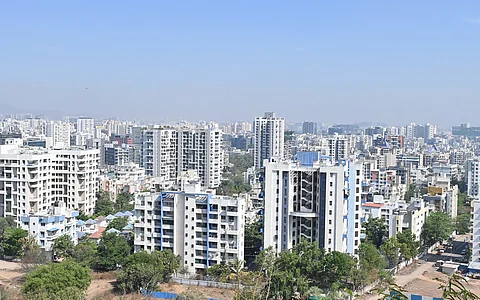

During April, Pune city experienced multiple days when peak day temperatures hovered between 40 and 43 degrees Celsius. Even higher temperatures were experienced in the Vidarbha region of Maharashtra during this same period, according to scientists. ‘Critical environmental limits’ were likely breached multiple times for elderly people in Pune during the month due to these temperatures, scientists have said.
The human core body temperature is tightly regulated by physiological processes and rarely fluctuates by even a degree Celsius during normal day-to-day activities. Maintaining this core temperature is important for the smooth functioning of the body. Elevated core temperatures, which occur when you have a fever for example, represent a departure from the normal state of the body. The primary cooling pathway for the body is by evaporation of sweat, which is why public health advisories stress on adequate hydration during hot conditions.
Very warm or cold environmental conditions make it a challenge to maintain the core temperature. When these conditions exceed certain thresholds, it is no longer possible for the body’s regulatory systems to stabilise the core body temperature, which begins to rise. Such environmental thresholds are called ‘critical environmental limits’ and it is dangerous to be exposed to such conditions. These thresholds are dependent on the individual, with younger people generally having higher thresholds as compared to older people.
Students and scientists at IISER Pune, who have been monitoring environmental conditions during April, have observed that critical environmental thresholds for elderly persons (above 65 years) have been exceeded on multiple days since the beginning of April.
The timing of these exceedances was between 12 pm and 4 pm in the afternoon. They came to this conclusion by using a detailed heat budget model of the human body and providing it with the ambient environmental conditions.
However, critical environmental thresholds represent an extreme state, and core temperatures can start rising for milder conditions as well, since the sweat we produce does not evaporate fully. Therefore, the sweat rate needed to cool the body is exceeded. Such conditions were experienced for a longer time on these extreme days. For elderly persons, such conditions lasted between 9.30 am and 6 pm, much longer than the usual public health advisory that asks the public to avoid going outdoors between 12 pm and 4 pm
In April, they found that while critical environmental thresholds were exceeded between zero and four hours per day, sweat rate exceedances were exceeded between three and eight hours per day, with the upper end of these ranges occurring when daily maximum temperatures exceeded 40 degrees Celsius.
“We are observing that conditions when core temperatures cannot be regulated in elderly people occur over much larger durations of the day, even in a relatively milder environment like the green IISER Pune campus, and under relatively milder conditions observed in Pune. The environmental heat stress is likely to be much higher in Vidarbha which has reported multiple heat stroke cases in April,” said Joy Monteiro, assistant professor at the Department of Earth and Climate Science at IISER, Pune.
“We must keep in mind that slight increases in core temperature are themselves not hazardous, and can often occur during intense physical activity such as manual labour or exercise. However, performing such activity during extreme environmental conditions such as those we have observed this month is likely to greatly increase the risk of core temperatures exceeding 40 degrees Celsius, which is when people likely experience heat stroke.
“Such environmental conditions have likely been since before, but it is the first time that we have been able to quantify the likely health risk associated with such conditions. This is important since we seem to be experiencing such conditions more often than previously,” Monteiro explained.
“We note that maximum sweat rates can reduce not just due to age, but also due to certain medical conditions such as diabetes and dehydration. For instance, it is not uncommon for women to intentionally stay dehydrated to avoid using toilet facilities that can be unsanitary. This can increase the risk of experiencing heat illnesses and worse even in younger persons,” he added.